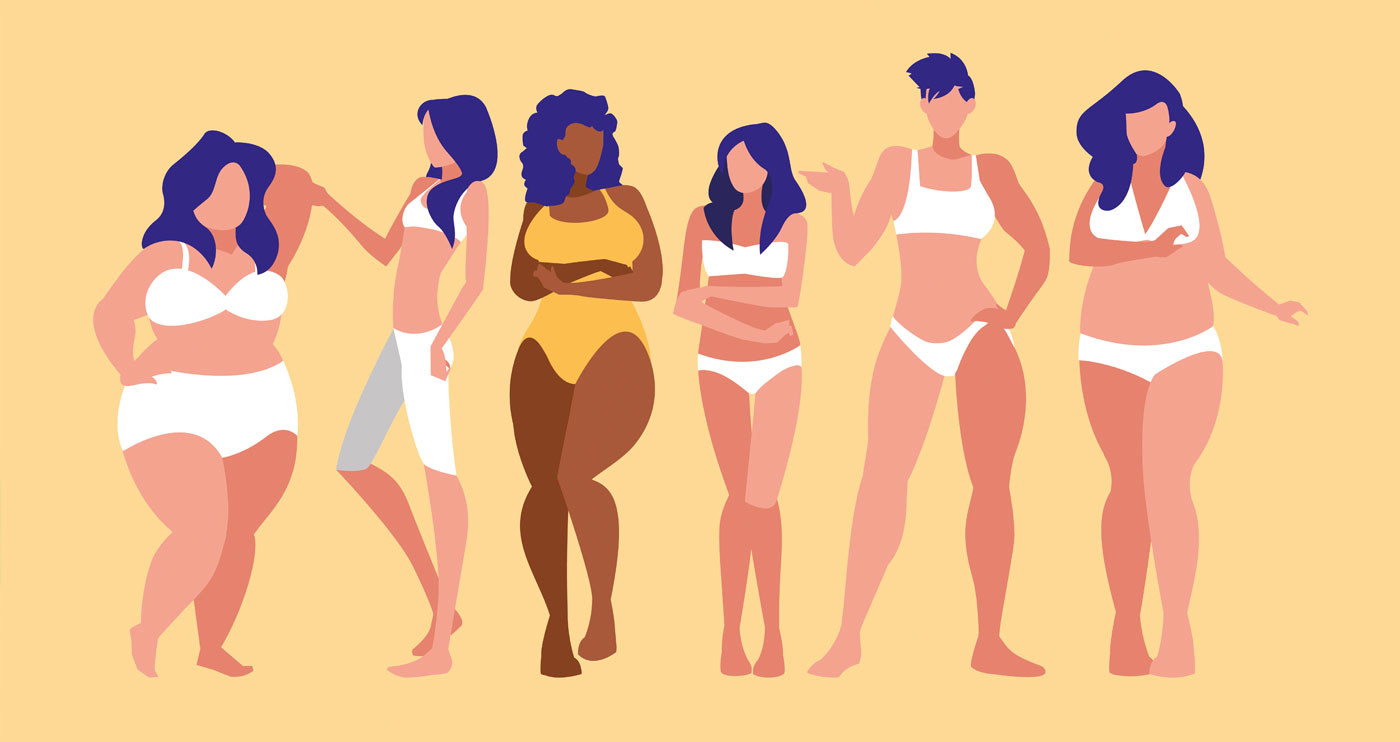
On its face, body positivity sounds like a great idea. Everyone should feel comfortable in their skin and positive about their body. Unhealthy negative attitudes easily turn into eating disorders, addictions, anxiety, and depression. Unfortunately, it’s always positive to have too much of a good thing. “Body positivity” has evolved from its original meaning and can sometimes have the opposite effect than it intended.
What is body positivity?
Body positivity is the idea that everyone deserves to feel good about their body, regardless of what society thinks. The body-positive movement seeks to change the way that other people view standards of beauty and increase the acceptance of all bodies.
It’s been successful, to a degree. Models now show more diversity than they did in the past, which is a very important step. There’s only one problem: in doing this, the body positive movement has changed the idea of what’s desirable to society, but not much else.
The Dangers of Body Positivity
One of the major things that the body positivity movement sought to challenge was the prevailing western standard of beauty as young, thin, and white. The thing is, beauty is always defined by other people. Simply broadening the idea of what’s aesthetically acceptable to others doesn’t do much for people on an individual level — it’s still unhealthy to have your body image tied to other people’s opinions of you, even if they’ve adopted a broader definition of beautiful.
The body positivity movement has largely focused on the acceptance of fat bodies, which has left a lot of people with visible disabilities feeling especially othered. This has also fostered accusations that “body positivity” is less about actually accepting a wider variety of bodies and more about helping people justify their consumption.
One idea that goes hand-in-hand with body positivity is the concept that nobody owes anyone else anything. You don’t owe another person attractiveness or even healthy choices. Critics of body positivity point out that the latter is an unhealthy attitude to take toward interpersonal relationships — while you can choose not to make health a priority in your life, loved ones also shouldn’t be obligated to accommodate that choice, or shamed for not doing so. In this sense, they argue, it’s no different than refusing to accommodate an addict who chooses not to seek treatment.
Another problem that critics have with the body positivity movement is that it has created a culture where myths proliferate. Ideas like “starvation mode” and misinformation about bodily setpoints are sometimes used to justify not attempting to make healthier choices — why bother, if they won’t make a difference or will only cause harm in the long run?
Some circles have also been accused of encouraging a “crabs in a bucket” mentality. In these instances, people who choose to make healthy lifestyle changes and end up losing weight, as a result, are treated as traitors to the movement. They changed their bodies, therefore they weren’t truly “body positive.” Critics of these circles argue that this mentality encourages adherents to give up — if they make healthier choices, they’ll be sacrificing their social connections and support networks.
The Move Toward Body Neutrality
With this in mind, many former followers of the body positivity movement are shifting their mindset. Rather than thinking that everyone should feel good about their bodies (a nebulous goal, at best, and one that still relies heavily on a standard of beauty), body neutrality says that people should feel neutral. It’s fine to not feel beautiful or even want to focus on your appearance. The goal is neutrality.
Instead, adherents emphasize feeling good about what your body can do for you. Arguably, it’s “loving” one’s body in the truest sense — loving what it can do and providing it with what it needs to keep going. It embraces function over aesthetics. You don’t need to feel any particular way about your body in order to appreciate it as a vehicle that lets you interact with the world. If your body changes shape, that’s just another interesting thing that it’s capable of doing.
Body neutrality also embraces more sustainable attitudes toward diet and exercise. Neither should be viewed as a punishment, or a price to be paid in order to conform to an aesthetic standard. People should exercise because physical movement is pleasurable — if it isn’t, they should find a physical activity that is. People should eat nutritious food because it makes them feel good, both physically and mentally. There’s no reason to avoid occasional treats. In this way, feeling neutral is an excellent first step toward getting healthy.
In the beginning, the body positivity movement was a great thing. It allowed people to shed decades of negative self-talk and embrace themselves. Over time, the movement and the needs of the people involved have shifted. People began to point out weaknesses in body positivity’s philosophy. Now, body neutrality is stepping in to provide a different understanding of how we can appreciate ourselves.